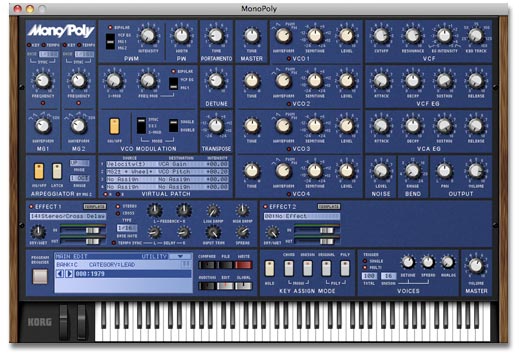

Likewise, adding a transposer of ☒4 semitones, moving the bend intensity (up to one octave), and moving the fine-tune of ☑ semitone to the same area has no detrimental effect on the 'feel' of the synth. Nonetheless, the addition of this control in no way detracts from the original design.

Because MIDI hadn't yet been invented when the original Polysix was released in 1981, this wasn't present on the original, and the amount of modulation engendered by the Polysix's own modulation wheel was hard-wired. A sixth control, labelled Vibrato Intensity, controls the depth of pitch modulation imparted by MIDI continuous controller (CC) number one. The OscillatorĪs on the original Polysix, Legacy Polysix 's oscillator section is simplicity itself, with three waveforms - sawtooth, pulse and pulse-width modulation (PWM) - three octaves, and a sub-oscillator. Even if you've never played a real Polysix, this is a simple and intuitive layout, and if you read my review of the Legacy MS20, you'll immediately recognise and understand the new controls that Korg have added to the original architecture.
Korg legacy collection troubleshooting plus#
However, this is not where the real action happens, and you'll probably want to jump immediately to the Edit screen (shown overleaf), which contains all the original controls, plus the new ones that Korg have added for the Legacy Collection version. On launching Legacy Polysix, the first thing you'll see is the Play screen (shown opposite), a fixed-size representation of the original synth.
Korg legacy collection troubleshooting how to#
I discussed how to load and authorise the Collection in the previous parts of this review, so I'll start by assuming that you have the software installed and running. Will Legacy Polysix live up the promise of the other components, and will Legacy Cell and its effects deliver what is claimed of them? Legacy Polysix So here we are, ready to put the final elements of the Collection through the SOS mill.

Photo: Mark EwingOver the last two issues, I've been taking a close look at Korg's Legacy Collection, specifically the software Wavestation and MS20, and confirming that they really are remarkably accurate recreations of the original instruments. but will the Legacy Polysix and Legacy Cell scale the same heights in the final instalment of our three-part definitive review? It's been an unreserved thumbs-up for Korg's bundle of software synths so far.


 0 kommentar(er)
0 kommentar(er)
